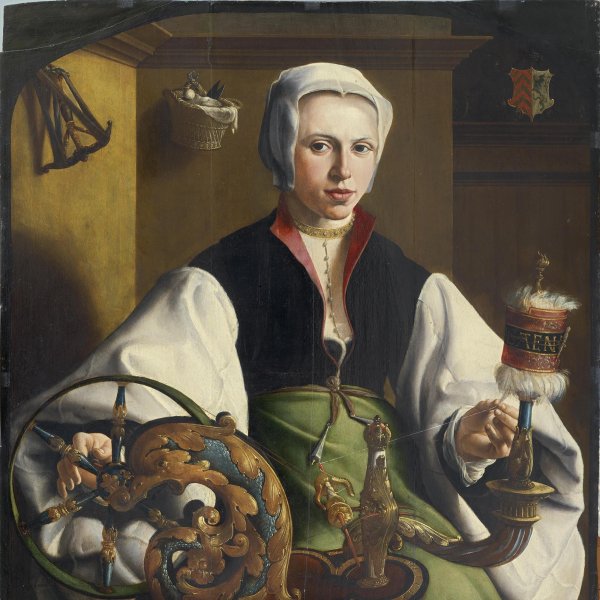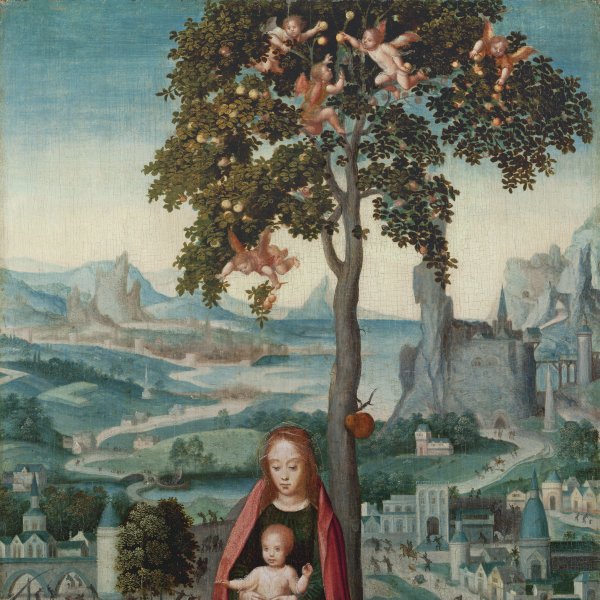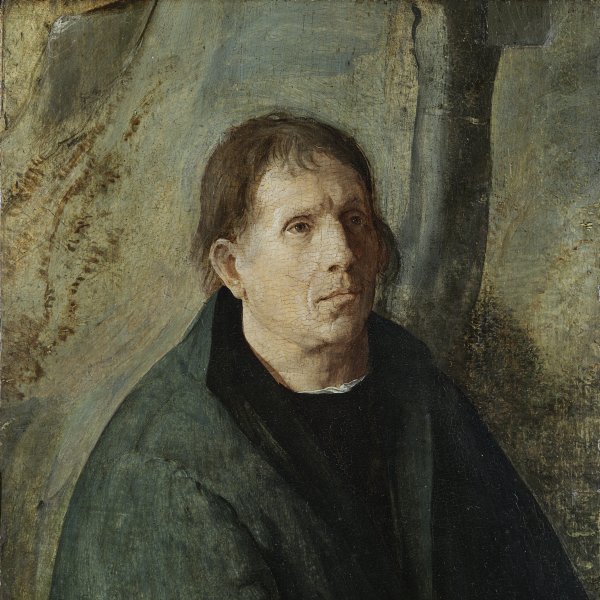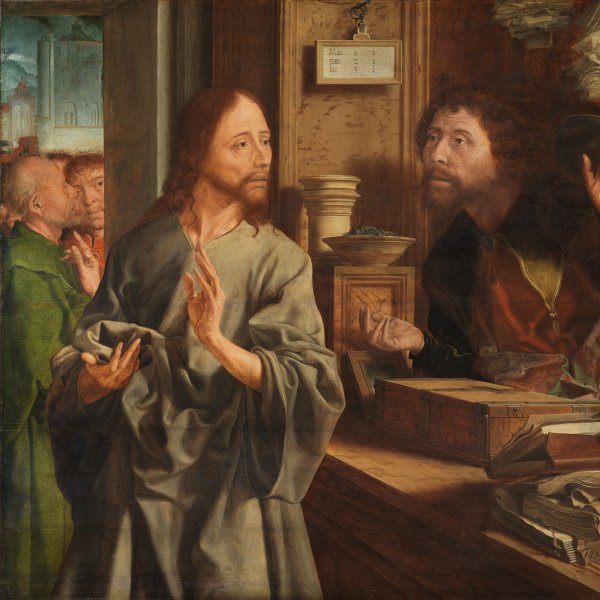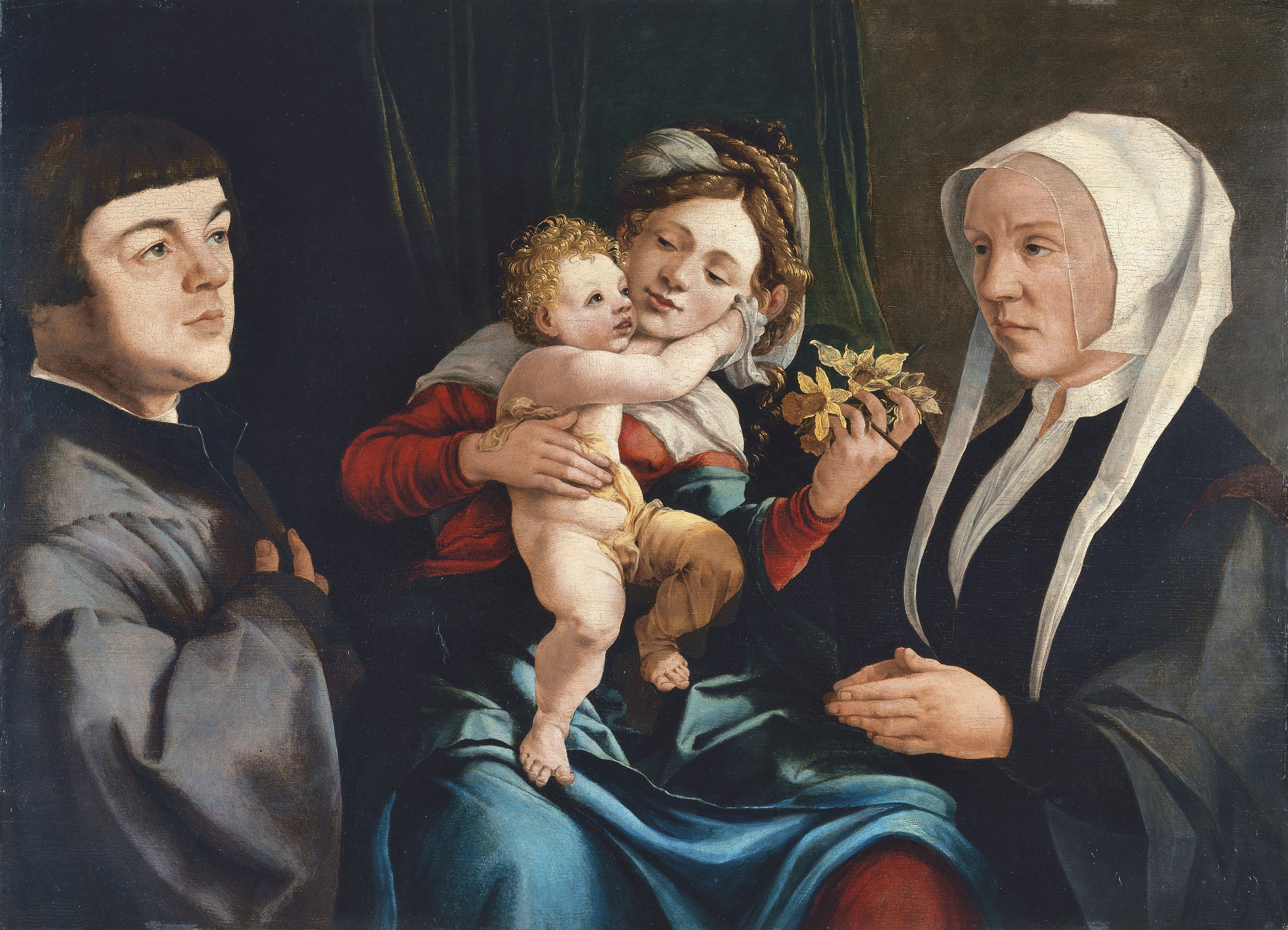Madonna of the Daffodils with the Christ Child and Donors
Jan van Scorel was an important Netherlandish painter and one of the artists to introduce the Italian Renaissance into the Low Countries. He travelled to Rome, summoned by Alexander VI, and also to Venice. As a result he was able to study ruins, classical sculptures and the works of the great Italian masters including Michelangelo, Raphael and Giorgione. Van Scorel trained with Jacob Cornelisz. van Oostsanen and possibly also with Jan Gossaert, while his pupils included major painters such as Antonis Mor. This panel depicts a plain interior adorned only with a green curtain, which creates the background, leaving one section of the wall visible. Before it, and occupying the centre of the composition, is the Virgin holding some narcissi, and the Christ Child. Flanking them is the pair of unidentified donors. The central group in this painting became extremely popular in its own day and there are numerous copies and versions. The present panel has been related to two other similar compositions, one in the Centraal Museum in Utrecht and the other in the Berlin Gemäldegalerie.
The Madonna of the Daffodils with the Christ Child and Donors has been dated to around 1535 when the artist was living in Utrecht following a brief period in Haarlem. The panel was included in the Collection’s catalogues from 1930. It was acquired in Amsterdam from Jacques Goudstikker in whose gallery it was to be found between 1924 and 1926, during which time it was included in an exhibition in Rotterdam of paintings from the gallery. In 1935 Friedländer was the first art historian to study the painting. The panel has been related to two similar but simpler compositions by the artist in the Centraal Museum, Utrecht, and the Gemäldegalerie, Berlin. These have the same central group but different flanking figures and settings. In the Utrecht version the central element of the Virgin and Child is set in a landscape with a donkey on the right and a figure that has been identified as Saint Joseph, in a composition that thus depicts a Rest on the Flight into Egypt. The forms of the central group are precisely outlined against a pale sky and Mary holds roses. In the Berlin panel the composition is similar but without any reference to the journey to Egypt and the tree on the left is slightly different with a more elaborate trunk than in the Utrecht painting. Finally, the Virgin’s roses are replaced by yellow flowers. The central group in the Berlin composition, which was widely disseminated and highly regarded to judge from the number of copies and versions known, reflects the style of Raphael in the tender relationship between the Mother and Child. It also looks to early Michelangelo in the Christ Child’s pose, which recalls the Doni Tondo in the Galleria degli Uffizi.
In the present panel the landscape background is replaced by a simple interior with a heavy green curtain on the left. The Christ Child and the Virgin, here holding daffodils, are accompanied by two donors whose difference in age has led to the suggestion that they are a mother and son. Eisler, however, rejected this idea and considered that they were a married couple.
Mar Borobia





